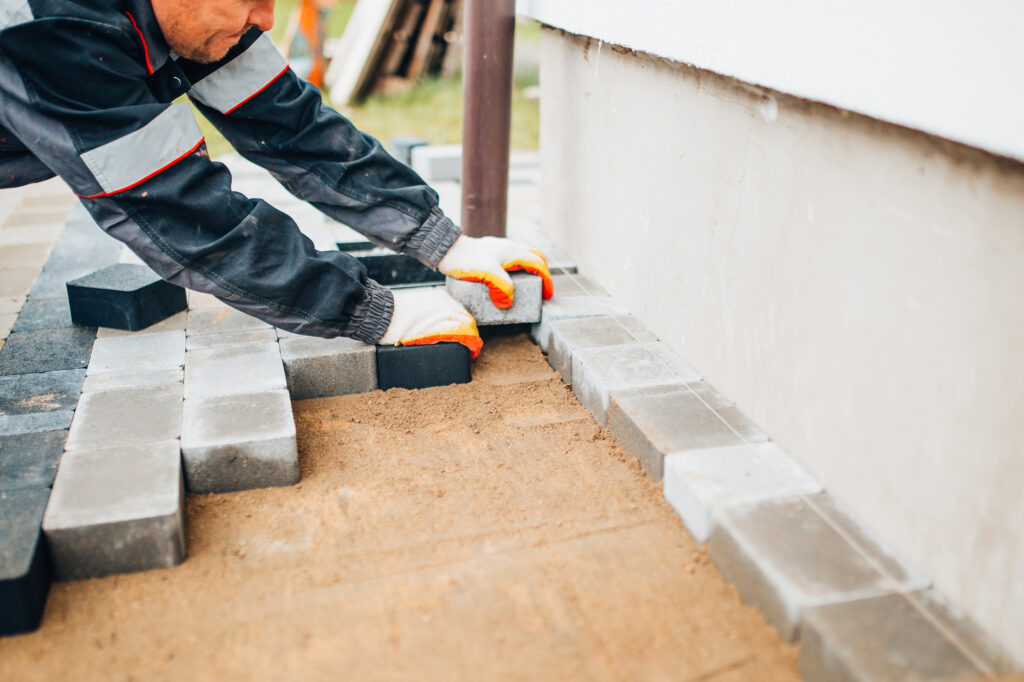A major part of protecting your home from wildfire is paying attention to the defensible space immediately surrounding it. Designing and maintaining this area to eliminate fuels and act as a buffer will help lower the chance fire will spread to your home.
What is a Home Ignition Zone (HIZ)?
The Home Ignition Zone (HIZ) includes the area from the exterior walls to 5 feet out from the building and is one of the most critical aspects of wildfire mitigation. Embers can travel miles and accumulate against your home. Combustible items in this area make your home vulnerable to wildfire ignition.
How can I improve my 5-foot HIZ?
- Remove all vegetation (trees, shrubs, bushes, plants, grass, weeds, etc.) including any overhanging limbs or branches from nearby trees or bushes.
- Install noncombustible hardscape such as gravel or paving stones around your home and keep it free of debris. Bare soil is also considered noncombustible but may require more maintenance to keep it free from weeds and grass.
- Remove combustible items such as wooden/plastic furniture, firewood, and trash cans from this zone.
- Park boats, RVs, trailers, or other vehicles elsewhere.
What can I do for my deck or covered porch?
- A burning deck can ignite siding and break glass in doors and windows, which would allow fire to enter the house quickly. Reducing the deck’s vulnerability requires an approach that focuses on the monthly maintenance, materials, and design features.
- At least monthly, remove debris that accumulates between the house and the deck and in between deck board gaps.
- Remove potted trees or shrubs and limit potted plants. Use clay or concrete planters.
- Purchase cast aluminum furniture and limit combustible items—such as chair cushions or door mats—that can be easily removed and stored elsewhere when necessary.
- Remove all vegetation (like grass and weeds) that may be underneath and install noncombustible materials such as concrete, gravel, or dirt. Create 5 feet of defensible space around the deck or covered porch as part of the 5-foot Home Ignition Zone.
- Remove anything stored underneath the deck.
- For decks 4 feet or less in size from the walking surface to the ground, install 1/8 inch or finer metal mesh or fully enclose with a brick, stone, or concrete wall around the bottom of the deck to prevent ember intrusion.
- Remove combustible pergolas and gazebos as well as any curtains, drapes or screens. Use metal pergolas or gazebos instead.
What about fencing?
Combustible privacy fences made of wood or vinyl can ignite and act like a wick leading fire straight to your home. To help prevent this, fencing attached to your home or within 5 feet of your home should be made from a noncombustible material such as metal.
Remove any back-to-back fencing. This may require you to coordinate with your neighbor(s) to eliminate duplicative fences that can trap debris between them.
Can I landscape outside of the HIZ?
The remainder of the property beyond the 5-foot HIZ must have defensible space that is regularly maintained. Wind-blown embers can still ignite plants in this zone, making plant selection and maintenance critical to reduce flame intensity near a home.
The rate of spread and flame length of a wildfire is affected by slope. A steeper slope will result in a faster-moving fire with longer flame lengths.
Steps to take:
- Routinely remove fallen pine needles, leaves, and other debris from trees in the yard.
- Remove groups of trees and prune them to have a canopy-to-canopy distance of at least 10 feet (distance should increase with slope). Also, prune their branches to at least 6 feet off the ground.
- Space out shrubs/bushes to avoid rows of bushes that can lead to fire spread.
- Routinely remove any dead vegetation.
Read more of our tips and ideas in the Homeowner Resources section.

